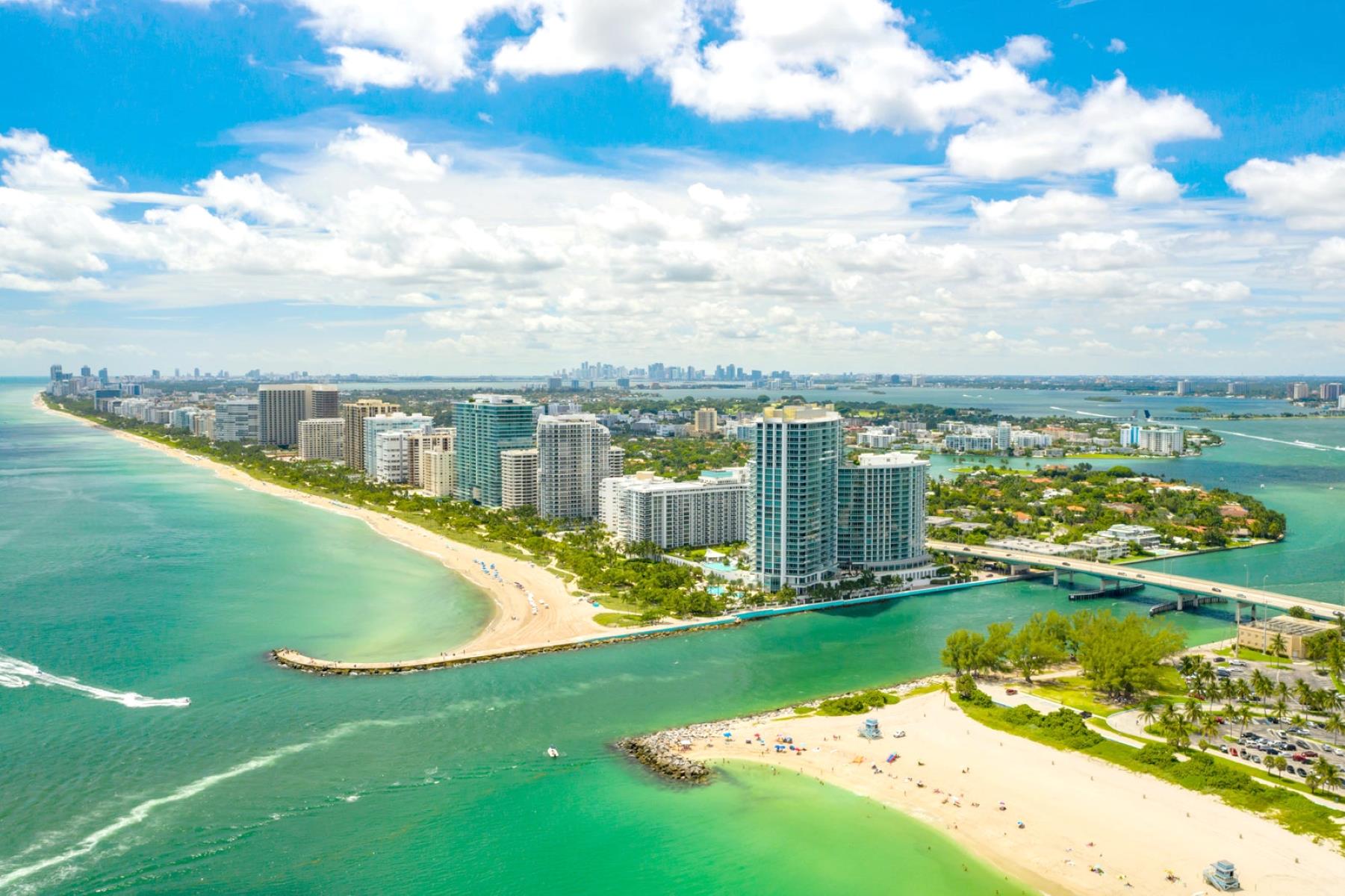Home>Travel and Places>The Hazards Of Haulover Inlet In Florida: Exploring The Perils For Boaters


Travel and Places
The Hazards Of Haulover Inlet In Florida: Exploring The Perils For Boaters
Published: February 21, 2024
Discover the dangers of navigating Haulover Inlet in Florida and learn how to stay safe while boating in this treacherous area. Explore the perils and precautions for boaters in this travel guide.
(Many of the links in this article redirect to a specific reviewed product. Your purchase of these products through affiliate links helps to generate commission for Regretless.com, at no extra cost. Learn more)
Table of Contents
Introduction
Haulover Inlet in Florida is a picturesque and popular waterway that connects the Atlantic Ocean to the Intracoastal Waterway. Boasting stunning views and access to prime fishing spots, it is a magnet for boaters and anglers alike. However, beneath its tranquil surface lies a treacherous undercurrent that has earned it a notorious reputation among seasoned mariners.
Navigating Haulover Inlet is not for the faint of heart. The inlet's turbulent waters and shifting sandbars present a formidable challenge to even the most experienced boaters. Its unpredictable conditions have led to numerous accidents and mishaps, earning it the moniker "Hell's Gate" among locals.
In this article, we will delve into the history, geography, and hazards of Haulover Inlet, shedding light on the perils that await unsuspecting boaters. Additionally, we will provide valuable insights and safety tips to help seafarers navigate this formidable passage with caution and confidence.
Join us as we embark on a journey to uncover the hidden dangers and beauty of Haulover Inlet, gaining a deeper understanding of the risks and rewards that come with venturing into its waters.
The History of Haulover Inlet
Haulover Inlet holds a rich and storied history that dates back centuries, shaping its identity as a formidable yet alluring maritime passage. The inlet's name itself offers a glimpse into its intriguing past, derived from the practice of early settlers who would "haul over" their vessels across the narrow strip of land that separated the Atlantic Ocean from the Intracoastal Waterway. This arduous process was necessitated by the absence of a natural inlet, compelling seafarers to manually transport their boats to access the ocean.
The transformation of Haulover Inlet from a makeshift portage to a navigable waterway is a testament to human ingenuity and perseverance. In the early 20th century, concerted efforts were made to carve a permanent channel through the barrier island, allowing for a more efficient and safer passage for maritime traffic. The completion of the inlet's construction marked a pivotal moment in its history, opening up new opportunities for trade, recreation, and exploration along Florida's coastline.
Over the years, Haulover Inlet has witnessed the ebb and flow of maritime activities, serving as a vital conduit for commercial shipping, recreational boating, and fishing expeditions. Its strategic location and proximity to vibrant coastal communities have contributed to its enduring significance in the region's maritime heritage.
Despite its historical evolution, Haulover Inlet has remained a formidable adversary, challenging the skills and fortitude of seafarers who dare to traverse its waters. The tales of shipwrecks, daring rescues, and maritime mishaps stand as testaments to the inlet's unforgiving nature, underscoring the need for caution and respect when navigating its treacherous currents.
As we unravel the history of Haulover Inlet, we gain a deeper appreciation for the resilience and resourcefulness of those who have braved its perils throughout the ages. The legacy of Haulover Inlet is etched in the annals of maritime lore, a testament to the enduring allure and dangers that have defined this iconic waterway.
The history of Haulover Inlet serves as a poignant reminder of the indomitable spirit of seafarers and the ever-changing forces of nature, intertwining the past, present, and future of this enigmatic maritime gateway.
The Geography and Currents of Haulover Inlet
Situated along the southeastern coast of Florida, Haulover Inlet commands a strategic position, serving as a vital link between the Atlantic Ocean and the Intracoastal Waterway. Its geographical features are characterized by a narrow and winding channel flanked by sandy shores, creating a picturesque yet perilous passage for maritime traffic.
The inlet's unique geography is further accentuated by the presence of shifting sandbars and submerged obstacles, adding an element of unpredictability to its already challenging waters. The interplay of tidal forces and oceanic currents exerts a profound influence on the dynamics of Haulover Inlet, contributing to its reputation as a formidable navigational test for boaters.
The currents within Haulover Inlet are known for their capricious nature, oscillating between periods of relative calm and sudden surges of turbulence. The ebb and flow of tides play a pivotal role in shaping the inlet's hydrodynamics, creating complex eddies and undertows that can catch unsuspecting vessels off guard.
Navigating the inlet demands a keen understanding of its ever-changing currents and the ability to adapt to the shifting dynamics of the waterway. Boaters must remain vigilant and responsive to the subtle cues of the inlet's tides, employing skillful seamanship to safely traverse its challenging expanse.
The geography and currents of Haulover Inlet are a testament to the raw power of nature and the dynamic interplay between land, sea, and sky. Its formidable beauty is juxtaposed with the inherent hazards that lurk beneath its shimmering surface, underscoring the need for unwavering caution and respect when venturing into its domain.
As we unravel the complex tapestry of Haulover Inlet's geography and currents, we gain a deeper appreciation for the delicate balance between natural forces and human endeavors. The interwoven threads of history, geography, and hydrodynamics converge to shape the enigmatic character of this iconic waterway, beckoning adventurers to embrace its challenges and embrace its allure with reverence and humility.
Common Hazards for Boaters
Navigating Haulover Inlet presents a myriad of hazards that pose significant challenges to boaters, demanding unwavering vigilance and seamanship. Understanding these common perils is essential for anyone venturing into the inlet's waters, as it equips seafarers with the knowledge needed to mitigate risks and ensure safe passage.
-
Treacherous Currents: The relentless ebb and flow of tidal currents within Haulover Inlet create a dynamic and unpredictable aquatic environment. Boaters must contend with swift currents that can rapidly change direction, leading to turbulent eddies and powerful undertows. These treacherous currents can catch vessels off guard, posing a serious threat to navigation and stability.
-
Shifting Sandbars: Haulover Inlet is notorious for its ever-shifting sandbars, which present a constant navigational hazard for boaters. The dynamic nature of these submerged obstacles means that the inlet's navigable channels are subject to sudden alterations, requiring boaters to exercise caution and adaptability to avoid running aground.
-
Narrow Passage: The narrow and sinuous nature of Haulover Inlet amplifies the inherent risks associated with navigating its waters. Vessels must maneuver through confined channels, often encountering oncoming maritime traffic, which demands precise navigation and situational awareness to avert potential collisions and mishaps.
-
Inclement Weather: The inlet's exposure to the open ocean renders it susceptible to rapidly changing weather conditions. Sudden squalls, high winds, and rough seas can transform the tranquil waters into a tempestuous maelstrom, testing the mettle of even the most seasoned boaters and necessitating swift and decisive action to ensure safety.
-
Vessel Congestion: Haulover Inlet's popularity as a thoroughfare for recreational and commercial vessels contributes to congestion, especially during peak boating seasons. The increased traffic density heightens the risk of navigational errors, close encounters, and potential conflicts, underscoring the need for heightened vigilance and adherence to maritime regulations.
-
Inexperienced Operators: The allure of Haulover Inlet attracts boaters of varying skill levels, including those with limited experience in navigating challenging waterways. Inexperienced operators may underestimate the inlet's hazards, leading to avoidable accidents and endangering the safety of themselves and others.
Understanding and respecting these common hazards is paramount for boaters seeking to navigate Haulover Inlet safely. By acknowledging the inherent risks and adopting a proactive approach to seamanship, mariners can mitigate these perils and embrace the allure of this iconic waterway with confidence and caution.
Safety Tips for Navigating Haulover Inlet
Navigating Haulover Inlet demands a combination of skill, preparedness, and respect for the inherent hazards that define this challenging waterway. By adhering to essential safety tips, boaters can enhance their ability to navigate the inlet with caution and confidence, mitigating risks and ensuring a safe passage through its treacherous waters.
-
Stay Informed: Prior to embarking on a journey through Haulover Inlet, boaters should stay abreast of current weather forecasts, tidal patterns, and navigational advisories. Accessing up-to-date information from reliable sources equips mariners with crucial insights into the prevailing conditions, enabling them to make informed decisions and plan their transit accordingly.
-
Exercise Patience and Caution: Patience is paramount when navigating Haulover Inlet. Boaters should approach the inlet with a mindset geared towards cautious and deliberate navigation, avoiding impulsive maneuvers and maintaining a safe speed that allows for swift responses to changing conditions.
-
Utilize Nautical Charts: Familiarizing oneself with detailed nautical charts of Haulover Inlet is essential for understanding its navigational intricacies. Identifying marked channels, potential hazards, and recommended routes empowers boaters to chart a safe course through the inlet, minimizing the risk of running aground or encountering submerged obstacles.
-
Monitor VHF Radio: Keeping a VHF marine radio tuned to the appropriate channels enables boaters to stay informed about maritime traffic, navigational warnings, and communication with other vessels. Maintaining radio contact with local authorities and fellow mariners fosters a sense of community awareness and enhances overall safety within the inlet.
-
Maintain Situational Awareness: Vigilance and situational awareness are critical when navigating Haulover Inlet. Boaters should remain attentive to the movements of other vessels, changes in current patterns, and potential navigational hazards, allowing for proactive adjustments to their course and speed as needed.
-
Seek Local Knowledge: Engaging with local boating communities and seeking insights from experienced mariners who frequent Haulover Inlet can provide invaluable firsthand knowledge. Learning from those familiar with the inlet's nuances and challenges can offer practical wisdom that enhances a boater's preparedness and confidence.
-
Equip Safety Gear: Ensuring that all required safety equipment, including life jackets, flares, and a first-aid kit, is onboard is non-negotiable. Boaters should also consider carrying emergency communication devices, such as an EPIRB (Emergency Position Indicating Radio Beacon), to facilitate rapid response in the event of an unforeseen emergency.
By embracing these safety tips, boaters can navigate Haulover Inlet with a heightened sense of preparedness and caution, fostering a culture of responsible seamanship and ensuring a safer and more rewarding experience on this iconic waterway.
Conclusion
In conclusion, Haulover Inlet stands as a testament to the captivating yet formidable nature of maritime exploration. Its rich history, dynamic geography, and inherent hazards converge to create a maritime passage that demands respect, skill, and unwavering vigilance from those who seek to traverse its waters. The legacy of Haulover Inlet is woven with tales of triumph and tribulation, reflecting the enduring spirit of seafarers who have braved its perils throughout the ages.
As we reflect on the hazards and challenges inherent to Haulover Inlet, it becomes evident that the allure of this iconic waterway is inseparable from the need for caution and preparedness. The treacherous currents, shifting sandbars, and narrow passages serve as constant reminders of the inlet's unforgiving nature, underscoring the importance of respecting its formidable character.
However, amidst the perils lie invaluable lessons and opportunities for growth. Navigating Haulover Inlet fosters a culture of seamanship that celebrates patience, adaptability, and a deep understanding of the interplay between natural forces and human endeavors. It beckons boaters to embrace the art of navigation with humility and reverence, recognizing that the inlet's challenges are as much a part of its allure as its breathtaking vistas and maritime heritage.
The safety tips provided offer a roadmap for mariners to navigate Haulover Inlet with prudence and confidence, empowering them to mitigate risks and ensure safe passage through its unpredictable waters. By staying informed, exercising patience, and maintaining situational awareness, boaters can navigate the inlet with a heightened sense of preparedness, fostering a culture of responsible seamanship that honors the legacy of those who have ventured before them.
Ultimately, Haulover Inlet serves as a poignant reminder of the delicate balance between human ambition and the forces of nature. It beckons adventurers to approach its waters with a blend of caution and courage, embracing the challenges it presents while honoring the wisdom of those who have navigated its treacherous currents before them. As boaters set sail into the enigmatic embrace of Haulover Inlet, they embark on a journey that transcends mere navigation, delving into the heart of maritime exploration and the enduring spirit of those who dare to chart a course through its storied waters.














